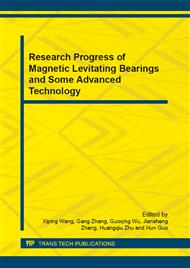p.57
p.63
p.69
p.75
p.80
p.85
p.90
p.95
p.100
Research on Adaptive Feedforward Control Algorithm of Electromagnetic Active Vibration Isolation System
Abstract:
Feedforward control method to control vibration in the active vibration isolation system was discussed. By introducing the FIR filter as the feedforward link, using the mean-square deviation of system error as the performance index and utilizing the LMS algorithm to obtain the optimal parameters of controller, the design of adaptive feedforward controller was fulfilled. The simulation results showed that: for the active vibration isolation system with regularly vibration source, adopting adaptive filter method of feedforward control has notable effect. The contrast experiment with using the PID controller further verified the simulation results.
Info:
Periodical:
Pages:
80-84
Citation:
Online since:
January 2012
Authors:
Keywords:
Price:
Сopyright:
© 2012 Trans Tech Publications Ltd. All Rights Reserved
Share:
Citation:


